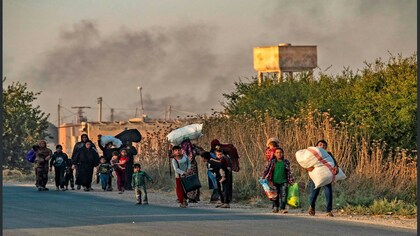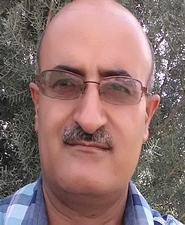Three Scientific Problems for Iran's Nuke Program
17:04 - 25 March 2012

Is it likely that Iran will soon have the bomb? Israel is worried enough to consider taking matters into their own hands. Other countries are throwing up economic sanctions and trying to reign in Iran’s ambitions. Chillingly, setting off a nuclear chain reaction as powerful as that which leveled Hiroshima requires less than 60 kg (130 lbs.) of uranium!
Why is it a struggle for an entire nation to assemble a lump of metal smaller than a volleyball and build a bomb around it? The answer is three-fold: (1) Fuel for nuclear weapons is hard to come by; (2) The design of the bomb is daunting; and (3) The brainpower to run the project is hard to assemble.
To build a bomb, Iran needs the chemical element uranium (U). A plutonium bomb requires less material, but it is almost certainly harder to design and build (PDF). Iran has little internal production of uranium, and there are international agreements banning export to Iran. The country must rely on smuggling, illicit deals and its own slow internal production. Even more daunting is the amount of refinement necessary for naturally occurring uranium to become useful for weapons.
When the United States first developed an atomic bomb during the Manhattan Project, it spent more than $15 billion in today’s dollars. It employed tens of thousands of skilled workers, required the largest building in the world at that time, consumed more electricity than New York City and took more than two years to produce enough uranium for one single bomb (used on Hiroshima). Today’s technology lowers the cost, but it is still not easy to produce uranium suitable for weapons from scratch.
Uranium in the earth’s crust is a 99.99% mixture of two isotopes. (Isotopes are elements that have different numbers of neutrons.) One isotope is U-238 with 146 neutrons, and the other is U-235 with 143 neutrons. Nuclear reactions, including inside both power plants and bombs, require U-235. However, natural uranium is only 0.7% U-235. (That is, there are merely 7 atoms of U-235 for every 993 atoms of the less useful U-238.) A nuclear power plant needs uranium to be purified to 3-4% U-235, while a nuclear bomb needs 90% U-235!
To put that into perspective: In order to obtain enough U-235 to make a bomb requires starting with at least 17,000 pounds of natural uranium.
The next essential component is a design for the weapon. A critical mass of U-235 must be brought together to produce a sustained nuclear chain reaction. For U-235, that is about 60 kg. Usually this is accomplished by joining together two previously separated smaller pieces which weigh 60 kg combined. The tricky part is combining the pieces quickly or else most of the energy is lost and the bomb fizzles. Because the reaction produces neutrons (which sustains the reaction), a method to reflect them back toward the uranium is generally employed as well.
All known technical designs for nuclear bombs are kept extremely secret by the governments that develop them, so anyone seeking to build their own bomb from scratch must carry out a number of difficult calculations to refine and perfect a design. This is not hard in theory, but it once occupied some of the brightest physicists in the world for years.
The final essential component is scientific expertise. There are no Oppenheimers, Feynmans or Tellers in Iran. Aspiring nuclear scientists and engineers are not flocking to the country either. Iran’s research collaboration in all scientific fields with the international community is among the lowest in the world; the United States for instance bans public funding of travel to Iran for scientific work. Thus they have a deficit of talent. Further, it appears that their scientists are targeted for killing by Israel. Iran may be resorting to desperate measures in their struggle to stop talent from leaving the country, as evidenced by their arrest of a physics graduate student from the University of Texas last year.
A modern nation with strong scientific ties, abundant strong industry and a base of scientific and engineering expertise can produce a far more complex device in just a few years. However starting from scratch with little skill and almost no cooperation from the outside world makes the process vastly more difficult. So where does Iran stand in all of these areas? Information is difficult to come by, but the general picture is something like this.
The process of concentrating U-235 is known as enrichment. Iran uses devices called centrifuges to achieve this. First, the natural uranium is combined with fluorine to produce uranium hexafluoride (UF6), a gas. The centrifuges spin at a high speed, separating the gas by weight. UF6 containing U-235 floats to the surface because it is lighter than the gas containing U-238. The U-235 is essentially skimmed from the surface, like fat off of milk, and centrifuged again. And again. And again. This process is repeated, perhaps for years, until the desired concentration of U-235 is achieved. Finally, the UF6 is converted back to solid uranium.
Iran’s largest known enrichment facility, the infamous Natanz, was sabotaged for several years by Stuxnet, the most complex and technologically advanced computer virus ever designed. (Technically, Stuxnet is a “worm,” which is a virus that does not reproduce through a host program, but on its own.) Amazingly, it is the first malware able to affect industrial equipment directly by targeting the control circuitry in machines and not just traditional computers. This means that infected machinery will malfunction on its own due to the virus even after all computers have been disconnected from it.
The worm also used four completely new attacks never used by any other virus to spread from computer to computer before making the jump into equipment. In some sense this is a super-virus, with an entirely new level of sophistication. It is unknown if Natanz has ever completely rid itself of the infection. Stuxnet was likely created by western governments specifically to accomplish this task. A new enrichment facility is now operational, however.
No one knows how far along Iran’s bomb designs are. The only notable nuclear expert that Iran may be able to access is Abdul Qadeer Khan, a gifted nuclear physicist, and the man who guided Pakistan as it developed small nuclear devices to escalate its arms race with India in the 1990s. Otherwise, standout talents are scarce for Iran, unless a government such as China or Russia lends clandestine aid. The country also faces a tough battle to raise its own experts due to the isolated nature of its universities and their relatively low academic reputation.
If Iran pours enough resources into this problem they will probably be able to achieve something through luck, persistent mediocrity and generous internal resource allocation. Though physics and geopolitics conspire against them, a nuclear Iran is a very real possibility.
Source – REAL CLEAR WORLD
By: Tom Hartsfield
Why is it a struggle for an entire nation to assemble a lump of metal smaller than a volleyball and build a bomb around it? The answer is three-fold: (1) Fuel for nuclear weapons is hard to come by; (2) The design of the bomb is daunting; and (3) The brainpower to run the project is hard to assemble.
To build a bomb, Iran needs the chemical element uranium (U). A plutonium bomb requires less material, but it is almost certainly harder to design and build (PDF). Iran has little internal production of uranium, and there are international agreements banning export to Iran. The country must rely on smuggling, illicit deals and its own slow internal production. Even more daunting is the amount of refinement necessary for naturally occurring uranium to become useful for weapons.
When the United States first developed an atomic bomb during the Manhattan Project, it spent more than $15 billion in today’s dollars. It employed tens of thousands of skilled workers, required the largest building in the world at that time, consumed more electricity than New York City and took more than two years to produce enough uranium for one single bomb (used on Hiroshima). Today’s technology lowers the cost, but it is still not easy to produce uranium suitable for weapons from scratch.
Uranium in the earth’s crust is a 99.99% mixture of two isotopes. (Isotopes are elements that have different numbers of neutrons.) One isotope is U-238 with 146 neutrons, and the other is U-235 with 143 neutrons. Nuclear reactions, including inside both power plants and bombs, require U-235. However, natural uranium is only 0.7% U-235. (That is, there are merely 7 atoms of U-235 for every 993 atoms of the less useful U-238.) A nuclear power plant needs uranium to be purified to 3-4% U-235, while a nuclear bomb needs 90% U-235!
To put that into perspective: In order to obtain enough U-235 to make a bomb requires starting with at least 17,000 pounds of natural uranium.
The next essential component is a design for the weapon. A critical mass of U-235 must be brought together to produce a sustained nuclear chain reaction. For U-235, that is about 60 kg. Usually this is accomplished by joining together two previously separated smaller pieces which weigh 60 kg combined. The tricky part is combining the pieces quickly or else most of the energy is lost and the bomb fizzles. Because the reaction produces neutrons (which sustains the reaction), a method to reflect them back toward the uranium is generally employed as well.
All known technical designs for nuclear bombs are kept extremely secret by the governments that develop them, so anyone seeking to build their own bomb from scratch must carry out a number of difficult calculations to refine and perfect a design. This is not hard in theory, but it once occupied some of the brightest physicists in the world for years.
The final essential component is scientific expertise. There are no Oppenheimers, Feynmans or Tellers in Iran. Aspiring nuclear scientists and engineers are not flocking to the country either. Iran’s research collaboration in all scientific fields with the international community is among the lowest in the world; the United States for instance bans public funding of travel to Iran for scientific work. Thus they have a deficit of talent. Further, it appears that their scientists are targeted for killing by Israel. Iran may be resorting to desperate measures in their struggle to stop talent from leaving the country, as evidenced by their arrest of a physics graduate student from the University of Texas last year.
A modern nation with strong scientific ties, abundant strong industry and a base of scientific and engineering expertise can produce a far more complex device in just a few years. However starting from scratch with little skill and almost no cooperation from the outside world makes the process vastly more difficult. So where does Iran stand in all of these areas? Information is difficult to come by, but the general picture is something like this.
The process of concentrating U-235 is known as enrichment. Iran uses devices called centrifuges to achieve this. First, the natural uranium is combined with fluorine to produce uranium hexafluoride (UF6), a gas. The centrifuges spin at a high speed, separating the gas by weight. UF6 containing U-235 floats to the surface because it is lighter than the gas containing U-238. The U-235 is essentially skimmed from the surface, like fat off of milk, and centrifuged again. And again. And again. This process is repeated, perhaps for years, until the desired concentration of U-235 is achieved. Finally, the UF6 is converted back to solid uranium.
Iran’s largest known enrichment facility, the infamous Natanz, was sabotaged for several years by Stuxnet, the most complex and technologically advanced computer virus ever designed. (Technically, Stuxnet is a “worm,” which is a virus that does not reproduce through a host program, but on its own.) Amazingly, it is the first malware able to affect industrial equipment directly by targeting the control circuitry in machines and not just traditional computers. This means that infected machinery will malfunction on its own due to the virus even after all computers have been disconnected from it.
The worm also used four completely new attacks never used by any other virus to spread from computer to computer before making the jump into equipment. In some sense this is a super-virus, with an entirely new level of sophistication. It is unknown if Natanz has ever completely rid itself of the infection. Stuxnet was likely created by western governments specifically to accomplish this task. A new enrichment facility is now operational, however.
No one knows how far along Iran’s bomb designs are. The only notable nuclear expert that Iran may be able to access is Abdul Qadeer Khan, a gifted nuclear physicist, and the man who guided Pakistan as it developed small nuclear devices to escalate its arms race with India in the 1990s. Otherwise, standout talents are scarce for Iran, unless a government such as China or Russia lends clandestine aid. The country also faces a tough battle to raise its own experts due to the isolated nature of its universities and their relatively low academic reputation.
If Iran pours enough resources into this problem they will probably be able to achieve something through luck, persistent mediocrity and generous internal resource allocation. Though physics and geopolitics conspire against them, a nuclear Iran is a very real possibility.
Source – REAL CLEAR WORLD
By: Tom Hartsfield



